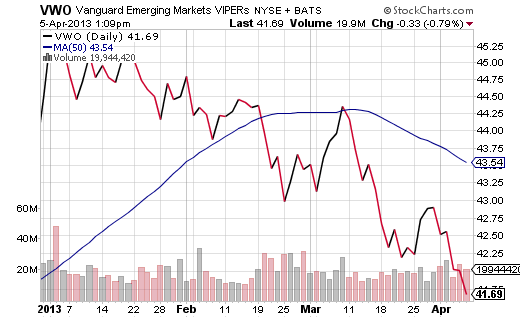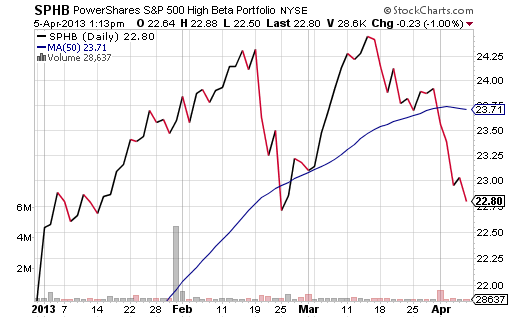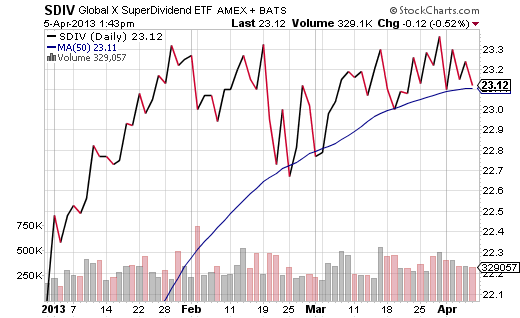I genuinely expected the primary media outlets to spin the 7.6% unemployment rate as cause for celebration. Instead, many finally chose to explain the reality behind employment in America; that is, the number of potential employees in the labor force is at 63.3% — the lowest percentage of workers in the workforce since 1979.
Psychologically, it may feel better to hear that the unemployment rate is at its lowest level in 4 years. However, when 500,000 Americans stop working, cease looking for employment and are no longer accounted for in the official data, the creation of a mere 88,000 jobs will distort the true picture. In fact, I cannot recall a greater disconnect between one unemployment stat that trumpets sterling success (i.e., U-2 at 7.6%) and another that reflects dismal deterioration (i.e., labor force participation at 63.3%).
Is the country really getting its collective act together? Has the jobs outlook brightened such that things are dramatically better than 4 years earlier… and trending in a positive direction? Or Is the employment picture the worst that it has been in nearly 34 years… and trending in a negative direction?
For weeks, I’ve been harping on the idea that investors should be raising cash and/or rotating to more defensive equities in non-cyclical segments. Examples include:
1. April 1, 2013. Selecting Safer Growth and Income ETFs for the 2nd Quarter Pullback
2. March 13, 2013. Diminishing “Wealth Effect” Requires ETF Portfolio Changes
3. February 22, 2013. Why An Upcoming Pullback Could Whack Financial ETFs
By no means do I pretend to be prescient. Nor did I rely on the over-hyped seasonal pattern of “Selling in May and Going Away.” Rather, defensive sectors (e.g., consumer staples, health care, utilities, telecom, etc.) have been offering less beta risk than growth-oriented segments while simultaneously providing equal or greater reward. Are the defensive non-cyclicals expensive on a historical P/E basis? Absolutely. Yet the premium one is paying for that safety pays off during a time when worldwide economic uncertainty is massive.
Can the U.S. stock market continue dismissing the deepening euro-zone recession as well as the questionable solvency of many European financial institutions? Vanguard Europe (VGK) does not seem to think so.
Can the U.S. stock market continue to ignore the impact that currency appreciation against the euro and yen is having on emerging markets. Vanguard MSCI Emerging Markets (VWO) does not seem to think so.
Can growth-oriented stock sectors in the U.S. economy (e.g., technology, energy, financials, industrials, etc.) prosper on the shoulders of Federal Reserve interest rate manipulation alone? PowerShares S&P 500 High Beta (SPHB) does not seem to think so either.
There are those who have angrily dismissed my suggestion to pare back on emergers, foreign developed ETFs and high beta segments. They labeled it, “selling low.” The truth is, I am simply controlling the outcome by selling assets for a big gain, small gain or a small loss. What some view as “selling low,” I view as avoiding the unnecessary risks associated with watching certain assets travel a great deal lower.
Similarly, I have advocated raising cash and rotating into safer opportunities. Those that have been reading me for years or listened to me as a national talk radio host in the late 90s know better. Cash is not “trash” when you are patiently putting money to work in areas that pull back to levels that you are comfortable entering. You can also employ stop-limit loss orders on new purchases. Equally important, when you sell a high risk asset, you do not need to rotate immediately into a lower risk asset. You can wait in cash for corrective activity to give you the entry point that you desire.
For example, if you have sold your exposure in PowerShares NASDAQ QQQ Trust (QQQ), you do not need to immediately rotate into one of the many “faves” I have discussed. Unless you already have an ample cash buffer, it makes sense to wait for the desired asset to come to your price point, whether it is WisdomTree Equity Income (DHS), iShares U.S. Minimum Volatility (USMV) or GlobalX Super DIvidend (SDIV). The latter (SDIV) is near a 50-day support and could provide a reasonable entry point for those with cash on hand. 
Disclosure: Gary Gordon, MS, CFP is the president of Pacific Park Financial, Inc., a Registered Investment Adviser with the SEC. Gary Gordon, Pacific Park Financial, Inc, and/or its clients may hold positions in the ETFs, mutual funds, and/or any investment asset mentioned above. The commentary does not constitute individualized investment advice. The opinions offered herein are not personalized recommendations to buy, sell or hold securities. At times, issuers of exchange-traded products compensate Pacific Park Financial, Inc. or its subsidiaries for advertising at the ETF Expert web site. ETF Expert content is created independently of any advertising relationships.
- English (UK)
- English (India)
- English (Canada)
- English (Australia)
- English (South Africa)
- English (Philippines)
- English (Nigeria)
- Deutsch
- Español (España)
- Español (México)
- Français
- Italiano
- Nederlands
- Português (Portugal)
- Polski
- Português (Brasil)
- Русский
- Türkçe
- العربية
- Ελληνικά
- Svenska
- Suomi
- עברית
- 日本語
- 한국어
- 简体中文
- 繁體中文
- Bahasa Indonesia
- Bahasa Melayu
- ไทย
- Tiếng Việt
- हिंदी
Worst Labor Force Participation Since 1979 Bolsters Low Vol ETF Appeal
Published 04/07/2013, 12:34 AM
Updated 03/09/2019, 08:30 AM
Worst Labor Force Participation Since 1979 Bolsters Low Vol ETF Appeal
3rd party Ad. Not an offer or recommendation by Investing.com. See disclosure here or
remove ads
.
Latest comments
Install Our App
Risk Disclosure: Trading in financial instruments and/or cryptocurrencies involves high risks including the risk of losing some, or all, of your investment amount, and may not be suitable for all investors. Prices of cryptocurrencies are extremely volatile and may be affected by external factors such as financial, regulatory or political events. Trading on margin increases the financial risks.
Before deciding to trade in financial instrument or cryptocurrencies you should be fully informed of the risks and costs associated with trading the financial markets, carefully consider your investment objectives, level of experience, and risk appetite, and seek professional advice where needed.
Fusion Media would like to remind you that the data contained in this website is not necessarily real-time nor accurate. The data and prices on the website are not necessarily provided by any market or exchange, but may be provided by market makers, and so prices may not be accurate and may differ from the actual price at any given market, meaning prices are indicative and not appropriate for trading purposes. Fusion Media and any provider of the data contained in this website will not accept liability for any loss or damage as a result of your trading, or your reliance on the information contained within this website.
It is prohibited to use, store, reproduce, display, modify, transmit or distribute the data contained in this website without the explicit prior written permission of Fusion Media and/or the data provider. All intellectual property rights are reserved by the providers and/or the exchange providing the data contained in this website.
Fusion Media may be compensated by the advertisers that appear on the website, based on your interaction with the advertisements or advertisers.
Before deciding to trade in financial instrument or cryptocurrencies you should be fully informed of the risks and costs associated with trading the financial markets, carefully consider your investment objectives, level of experience, and risk appetite, and seek professional advice where needed.
Fusion Media would like to remind you that the data contained in this website is not necessarily real-time nor accurate. The data and prices on the website are not necessarily provided by any market or exchange, but may be provided by market makers, and so prices may not be accurate and may differ from the actual price at any given market, meaning prices are indicative and not appropriate for trading purposes. Fusion Media and any provider of the data contained in this website will not accept liability for any loss or damage as a result of your trading, or your reliance on the information contained within this website.
It is prohibited to use, store, reproduce, display, modify, transmit or distribute the data contained in this website without the explicit prior written permission of Fusion Media and/or the data provider. All intellectual property rights are reserved by the providers and/or the exchange providing the data contained in this website.
Fusion Media may be compensated by the advertisers that appear on the website, based on your interaction with the advertisements or advertisers.
© 2007-2024 - Fusion Media Limited. All Rights Reserved.
